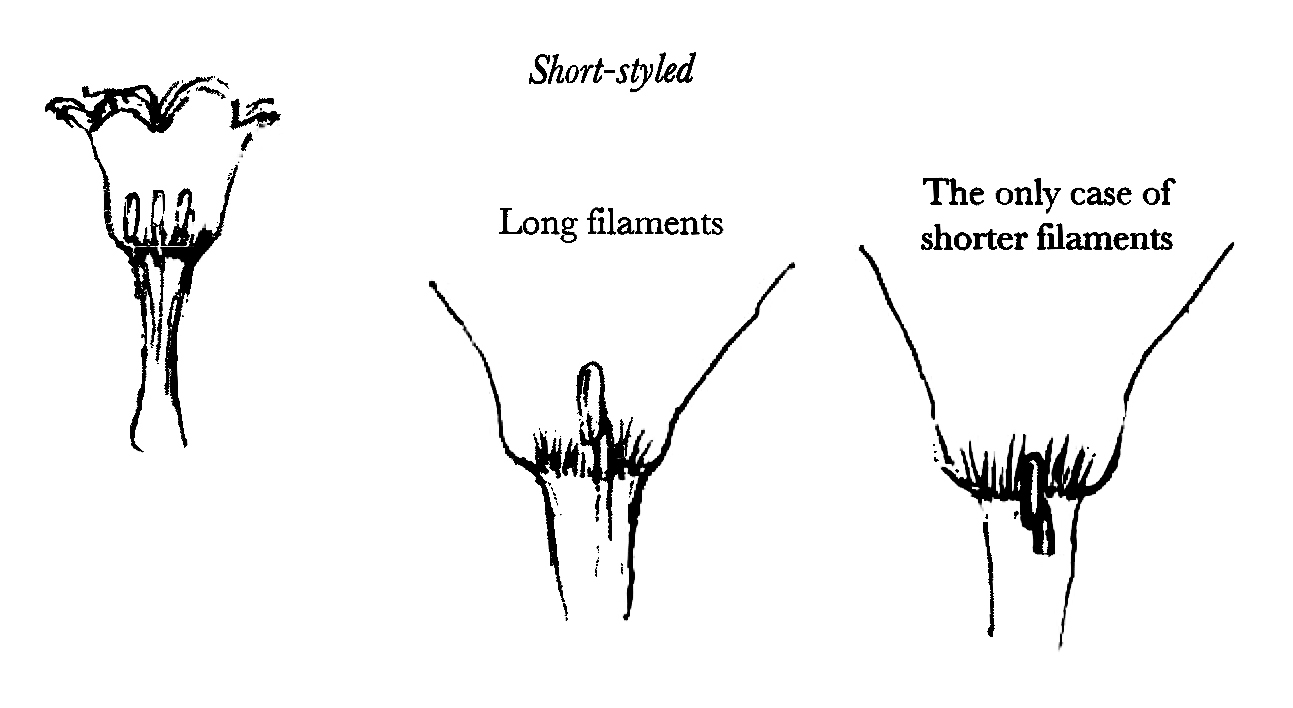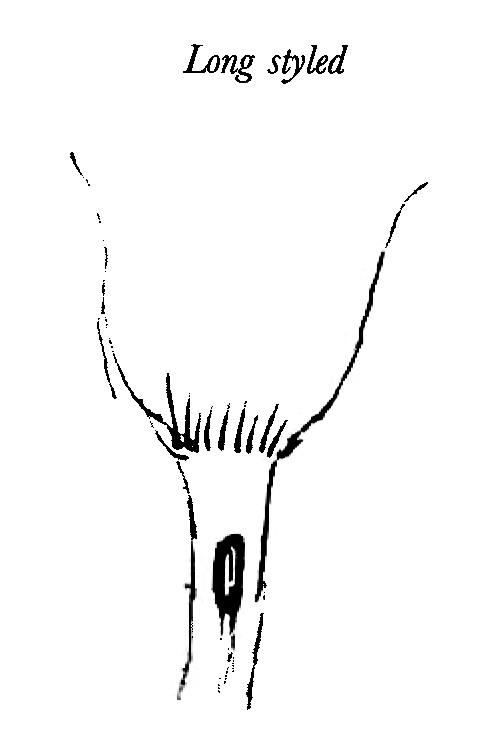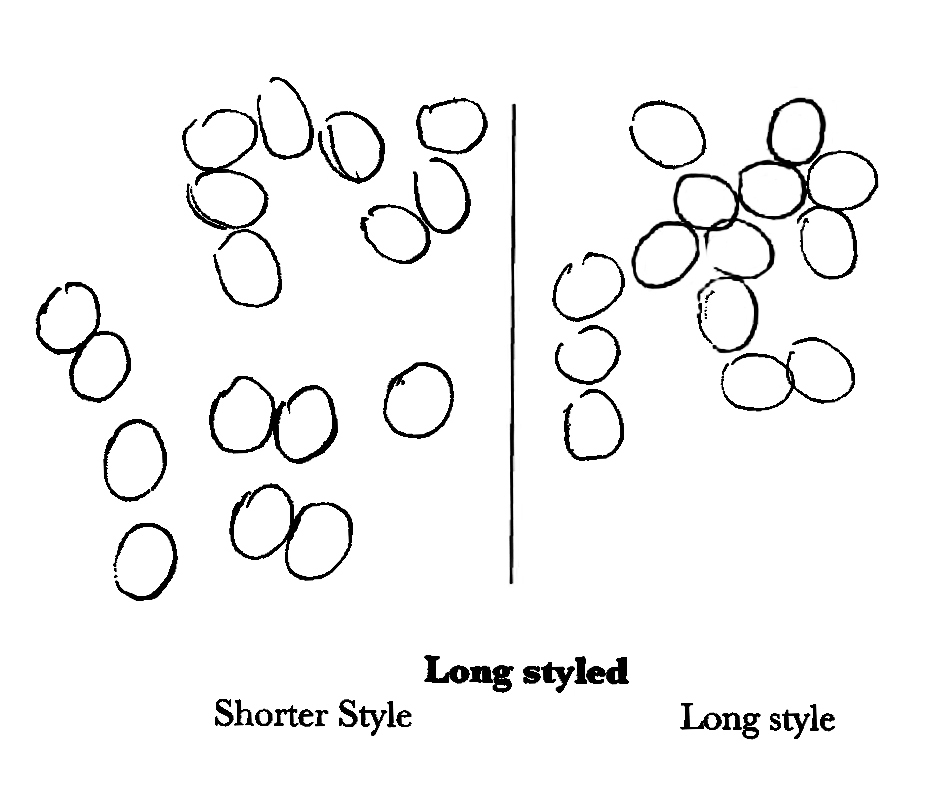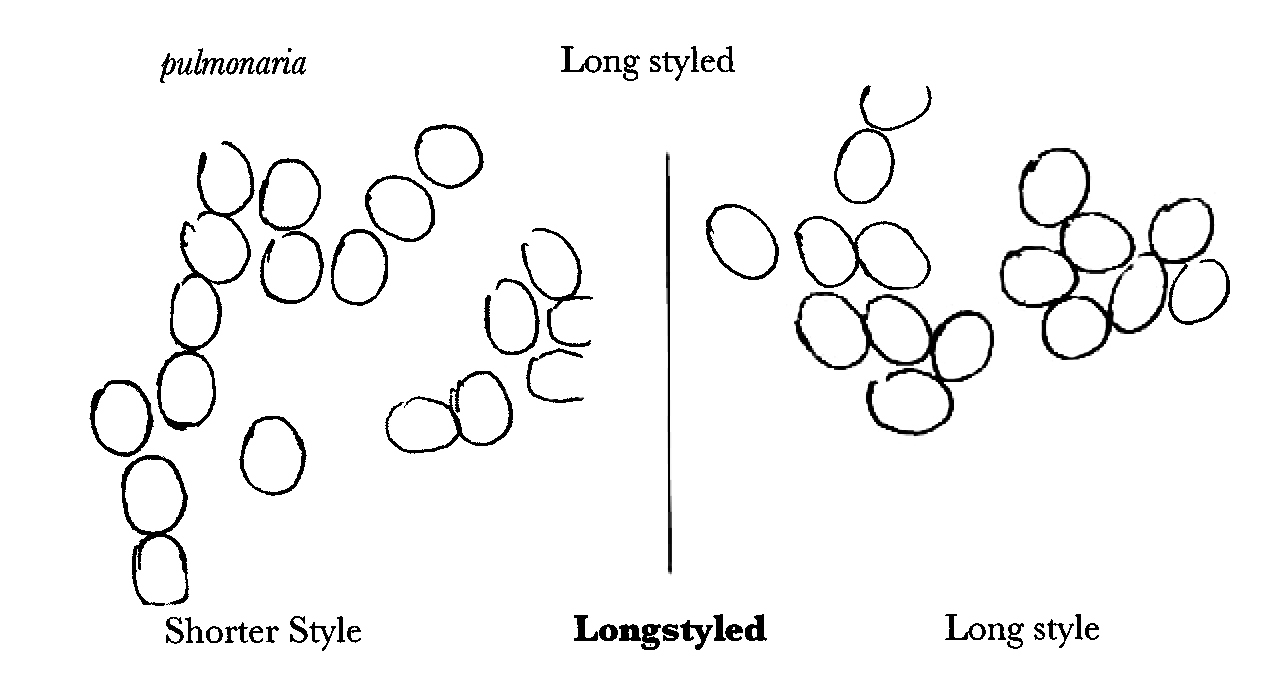From W. E. Darwin 18 April 1864
Southampton & Hampshire Bank, | Southampton
April 18 1864
My Dear Father
There is not the least doubt that you are right as to its being only variability.1
first as to the Short styled.
Among the few flowers I got at my first visit there was only one with the short filaments i.e. with the stamens within the tube which was the one I wrote to you about & was so withered I could not draw it2
I went again yesterday & examined from 85 to 90 plants,3 & could not find a single short styled plant with the stamens entirely within the tube; I did find a single Case in which (all through the plant) the stamens were about in & out of the tube as you will see I have drawn.4 in all others short styled plants the stamens were well out of the tube tho’ perhaps the filaments were a very little longer in some cases than others.5
I measured the pollen in this shorter filamented one, & as you see it is exactly same size as the other.
2ndly. Long styled.
The stamens are always the in same position.
The length of pistil varies in length from just above the bristles to the base of the division in the petals.6
I measured the pollen of two sets of Long & shorter styled and you see they are just the same size, and always smaller than the short styled pollen.7 I did not measure the stigmas again as it did not seem worthwhile.8
I will send a line when I should like to be sent for on Friday.9
Your affect son | W E D.
[Enclosure]10

pistil in each case only reaching up to base of division of sepals
pollen in each case exactly same size
Some of the filaments appear very slightly longer than others

stamens always in same position
pistil varies in length from just above the hairs in base of corolla to base of petal, or from base of Division of sepals to rather above their tips
Measured the pollen in longest & shortest styled Long styled the same size or if there was any difference the Longest styled is the largest
style nearly always constant for each plant in length, but not quite



CD annotations
Footnotes
Bibliography
Forms of flowers: The different forms of flowers on plants of the same species. By Charles Darwin. London: John Murray. 1877.
Summary
CD is right about variability [of Pulmonaria]. Encloses observations and diagrams of additional plants.
Letter details
- Letter no.
- DCP-LETT-4466
- From
- William Erasmus Darwin
- To
- Charles Robert Darwin
- Sent from
- Southampton
- Source of text
- DAR 110: A77–81b
- Physical description
- ALS 4pp ††, encl 5pp †
Please cite as
Darwin Correspondence Project, “Letter no. 4466,” accessed on 26 April 2024, https://www.darwinproject.ac.uk/letter/?docId=letters/DCP-LETT-4466.xml
Also published in The Correspondence of Charles Darwin, vol. 12


